

Exploring Sado Island
|
Lying off the coast of Niigata Prefecture, Sado Island is one of Japan’s largest islands. In the past, due to its remote location, many court nobles and intellectuals who fell out of favour were exiled to the island. One of the most famous forced resident was the Buddhist monk Nichiren, the founder of Nichiren Buddhism.
With agriculture and fishing as the major sources of income, Sado Island is a place shaped by sea and mountains. Thanks to its rich history and relaxed, rural atmosphere, Sado Island is a major tourist destination among the locals. It is home to the endangered Japanese crested ibis, which was extinct in the wild, but has been successfully reintroduced to the island. In September 2008, the Sado Japanese Preservation Centre released 10 birds as part of its crested ibis restoration programme. In April 2012, three crested ibis chicks hatched on Sado Island, marking the first time in 36 years that chicks have hatched in the wild in Japan. Sado Island is also known for its gold and silver mining history, and deposits of the precious metals have been known since at least the Heian Period. During its peak production period in the 17th Century, the mines produced an estimated 400 kilograms of gold and 37.5 tons of silver per year, making the mines on Sado Island one of the largest producers in the world. Extraction became increasingly difficult by the later half of the Edo period. By the Meiji period, the government sold the mines to Mitsubishi in 1896. World War II severely impacted production and mining operations were finally stopped in 1989. Today, the gold mines are under protection by the government, and of the 400 kilometres of tunnels, about 300 metres have been opened to the public as a museum, with mannequins and dioramas to explain the history of the facility. Like many remote places in Japan, Sado Island has been experiencing a steady decline in population since 1950 as younger generations have moved to more urban areas. As such, there have been ongoing efforts to promote tourism to the island. The island has about 300 temples, one of which is particularly unusual as it has a rabbit statue with the goddess of mercy sculpted onto its chest. The name of the temple is Chokokuji, also known as the Flower Temple due to the many types of flowers one can see in bloom throughout the year. To keep the lawn nicely trimmed without the use of herbicides, the chief priest of the temple decided to have rabbits and let them eat the weeds! When someone mentions “Niigata”, people immediately think of its famous rice, and Sado Island is no exception. The rice terraces in Iwakubi produce the famous Iwakubi Shoryu rice, cultivated by a clear stream of mountain water and long hours of sunlight. Grown with the environment in mind, farmers manage weeding manually and avoid pesticides whenever possible, in order to protect the crested ibis. Thus, the rice is recognised as the highest-rated rice (Grade A) by the Japan Grain Inspection Association. One of the most interesting ways you can get around the island is in a tarai bune, which is a wooden washtub boat! Originally made from barrels to store products such as miso paste, the tarai bune can reach narrow areas along the rock coasts. Sado Island is also associated with Kodo, the dynamic taiko (Japanese drums) group, as well as Earth Celebration, a yearly festival revolving around drumming, humanity, nature and Japanese culture. The three-day event is held in August, and attracts thousands of people from all over Japan and the world. While the festival was paused for two years due to the pandemic, there are plans to restart it this year. If you are looking for a lesser-known place to visit in Japan, why not make a stop at Sado Island? |
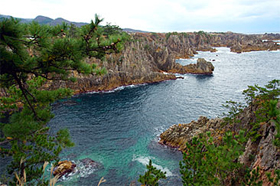 © Web Japan 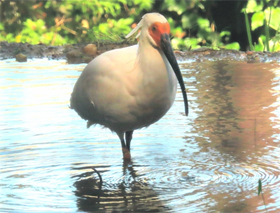 © photo AC 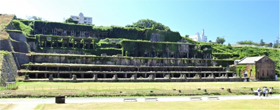 © photo AC 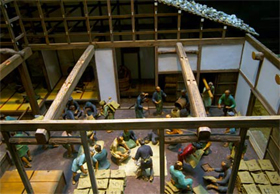 © Web Japan 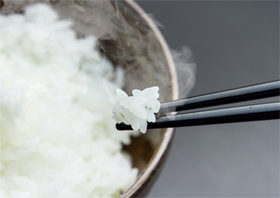 © photo AC 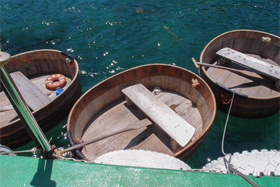 © photo AC 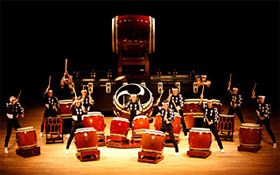 © Kodo |
Resources
|
“TRUE SADO”. 2022. Sado Tourism Association. Accessed 24 June. https://www.visitsado.com/en/. “The Sado Complex of Heritage Mines, Primarily Gold Mines: Sado City, Niigata Pref. Japan”. 2021. Sado City. https://www.city.sado.niigata.jp/site/mine/4481.html. “Sado Kinzan”. 2015. GOLDEN SADO INC. Accessed 24 June. http://www.sado-kinzan.com/en/. “Iwakubi Shoryu Tanada”. 2022. Niigata Prefecture Tourism Association. Accessed 24 June. https://enjoyniigata.com/en/spot/42578. |
|
Japan Creative Centre 4 Nassim Road, Singapore 258372 +65 6737 0434 / jcc@sn.mofa.go.jp https://www.sg.emb-japan.go.jp/JCC/ Nearest parking at Orchard Hotel & Delphi Orchard |
 |